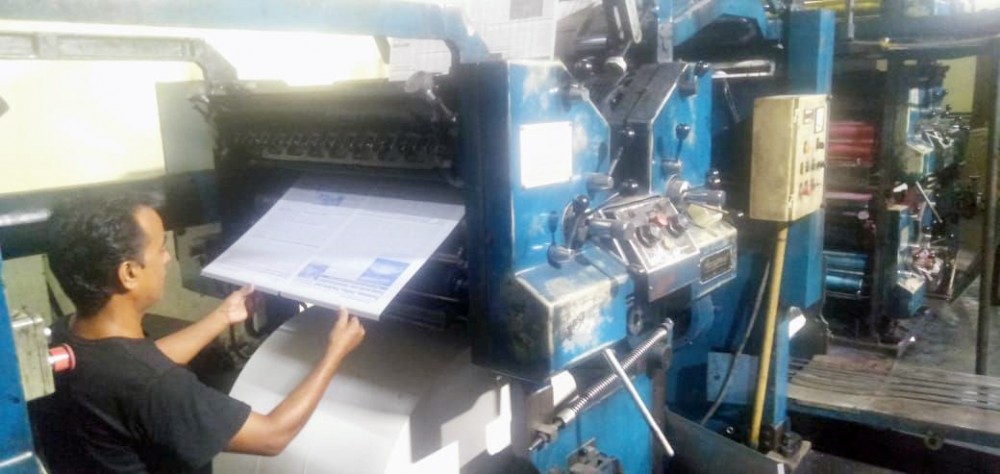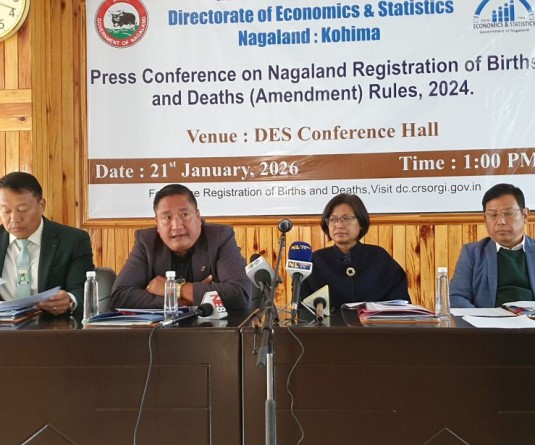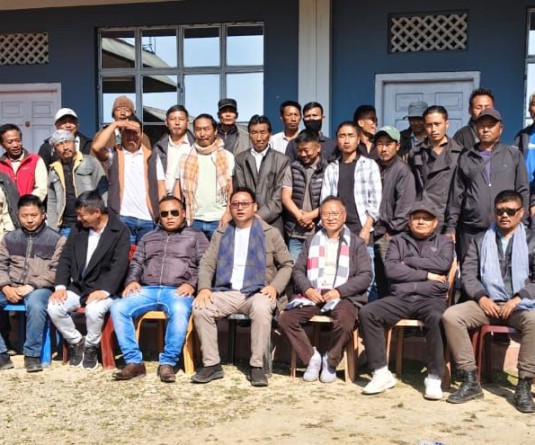An employee overseeing a newspaper printing process in Nagaland. (Morung Photo)

COVID-19 impact on newspaper industry in Nagaland- Part III
Morung Express News
Dimapur | August 9
Among the catastrophic effects the COVID-19 pandemic has left in its wake, misinformation and fake news seem to be one of the major challenges faced by newspapers all over the world.
In Nagaland, the scenario is no different.
In this three-part series, The Morung Express has attempted to explore the way the pandemic has left newspapers in Nagaland trying to stay afloat financially and at the same time keep readers informed.
The increase in the demand for news during these times of social unrest and uncertainty has resulted in a surge of unverified and fake news.
Editors and publishers of some Nagaland-based daily newspapers (both English and vernacular) shared their views on these challenges, while underlining the impact of newspapers in the collective fight against the pandemic.
Editor, Tir Yimyim (Ao vernacular), K Temjen Jamir said newspapers are playing a very responsible role in combating the COVID-19 pandemic by educating people through editorials and keeping people safe from fake news.
“We also try to contribute the needs of the health workers in whatever small way we could manage. In fact, our foremost responsibility is to give fearless, factual, positive and impartial news reporting and coverage as frontline workers at this time of pandemic,” he said.
Editor, Capi (Angami vernacular), Mhalezolie Kire said ever since the fight against COVID-19 pandemic in Nagaland, newspapers has been the main agent and ally of the government and health department in disseminating correct information, providing updates and especially combating fake news, which too have taken pandemic proportion.
“We strongly felt it our duty to timely inform our readers and public on the dos and don’ts, the guidelines and advisories of the government on the pandemic and, taking collective responsibilities by uploading and updating news through electronic means to clear doubts and unauthenticated news,” he said.
Editor, Publisher and Proprietor of Nagaland Page, Monalisa Changkija said the role of the Fourth Estate cannot be over-emphasized at the best of time, more so at the worst of time like the present.
“It is not only through dissemination of news and views that newspapers are putting in our mite towards collectively fighting the pandemic. From the very beginning, newspapers have been shouldering the responsibility to meet the needs of hungry and shelter-less people across the state, which we don’t talk about or publicize,” she said.
Besides, she said newspapers are also helping people 24x7, who need vital information and tie-ups for their problems regarding so many human issues say, for doctors, police, administrators, food, shelter, ambulances, medicines, funerals, etc.
Contribution of newspapers to economy
Coming to the contribution of newspapers in terms of employment and local economy, Tir Yimyim Editor said in Nagaland, in the present context, newspaper industry has become major player in providing employment and livelihood to many families from news editors to hawkers.
“Among few industries in Nagaland, newspaper industry must be contributing more revenue to the State in form of GST. Whether we get payment for the services we rendered or not, we are liable to pay GST so we pay to the government accordingly,” Jamir said.
According to Kire, the role of newspapers in providing employment and boosting local economy cannot be undermined. He said unlike government departments, the employment chain of newspapers are intrinsically connected right from the editor or publisher down to the hawkers. Then, besides the regular employees and workers in a newspaper, scores of workers and agents connected with industries and business houses like paper and print, computers, advertisement etc are all part of the revenue generating set up of newspapers, Kire said.
Monalisa said it is difficult to quantify the contributions of the newspaper industry in Nagaland in terms of employment and by extension the local economy. She said if one considers the various machinery, including computers and their accessories, consumables, etc., most of which procured locally, then newspapers are actually one of the main support-systems of the sector that deals with these items in the market.
“In terms of employment, besides our regular staff at the desk and the machine room and drivers and cleaners, some of our papers have employees on contract and stringers. Then, we have mechanics for our machinery, generators, etc., and we also hire repairers for computers and so many other gadgets essential to publish a newspaper,” she said.
There are also the distributors and hawkers, most of who are totally dependent on newspapers for their livelihood.
“No, it is not easy to quantify the cascading upshots of the contributions of newspapers in terms of employment and the local economy,” she added.
This is the last of a three-part series






